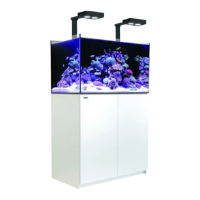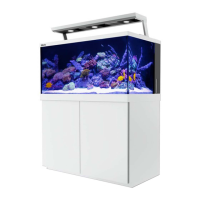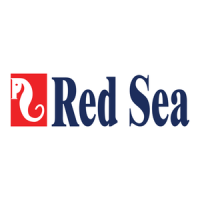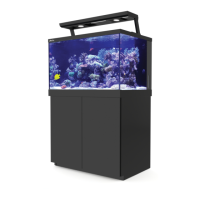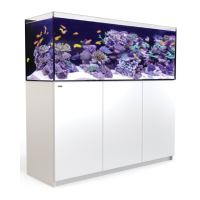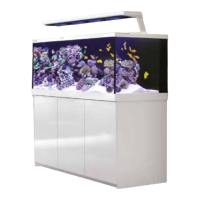Red Sea MAX User Manual
Preparing the substrate
You can set up your reef tank with or without substrate at the
bottom. We recommend an aragonite substrate base of at
least 5 cm (2”) which will help in maintaining a healthy reef.
In an established tank, when the substrate matures, it takes
on the characteristics of "live sand" in that millions of
microorganisms populate it. These creatures promote a
successful aquarium, helping with the biological filtration
processes of nitrification, denitrification and the
consumption/decomposition of uneaten food. The substrate
also provides a natural habitat for small worms and
crustaceans that help clean the tank from detritus and play a
major role in the delicate ecosystem's food chain.
Aragonite-based substrate helps keep the water chemistry
balanced. As it dissolves slowly in water, it releases calcium
ions and carbonates that help maintain proper pH and
alkalinity for good coral growth.
For optimal substrate effect, add a 5-7 cm (2-2.7") layer of
substrate, such as Red Sea Reef Base.
HINT
The deeper the layer, the greater the benefits of the
denitrification – up to 10 cm (4").
Red Sea Reef Base provides an ideal substrate for all marine
fish and invertebrate aquariums. It consists of natural reef
sand spheres mixed with coral chips, both made of aragonite.
The spheres are highly porous, calcareous shells of simple
protozoa (foraminifiers), which provide excellent media for
both aerobic (nitrifying) and anaerobic (denitrifying) biological
filtration. This natural source of aragonite provides high buffer
capacity over extended periods to maintain stable pH and
alkalinity.
Washing the substrate
Although Red Sea Reef Base has already been washed prior to
shipping, we recommend repeating the process before use.
1.
2.
3.
Rinse the substrate thoroughly under running water.
Spread it evenly on the tank bottom.
Note the change in water level as a result; remove excess
water and store it for later use.
Live Rock
Live rocks are small pieces of stony reef rubble naturally
broken off from their source. The main advantage of these
porous, aragonite-based rocks lies in their colonization by
large amounts of beneficial bacteria and other
microorganisms, including nitrifying and denitrifying bacteria,
macro-algae, sponges, worms and other invertebrates. These
organisms help maintain adequate water parameters and
establish the natural food chains. Live rock also has great
aesthetic appeal.
As a rule, you should add 1 kg (2.2lbs) of live rock per 10 liters
(2.6 gallons) of tank volume. The exact amount will vary with
20
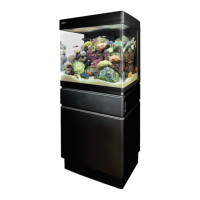
